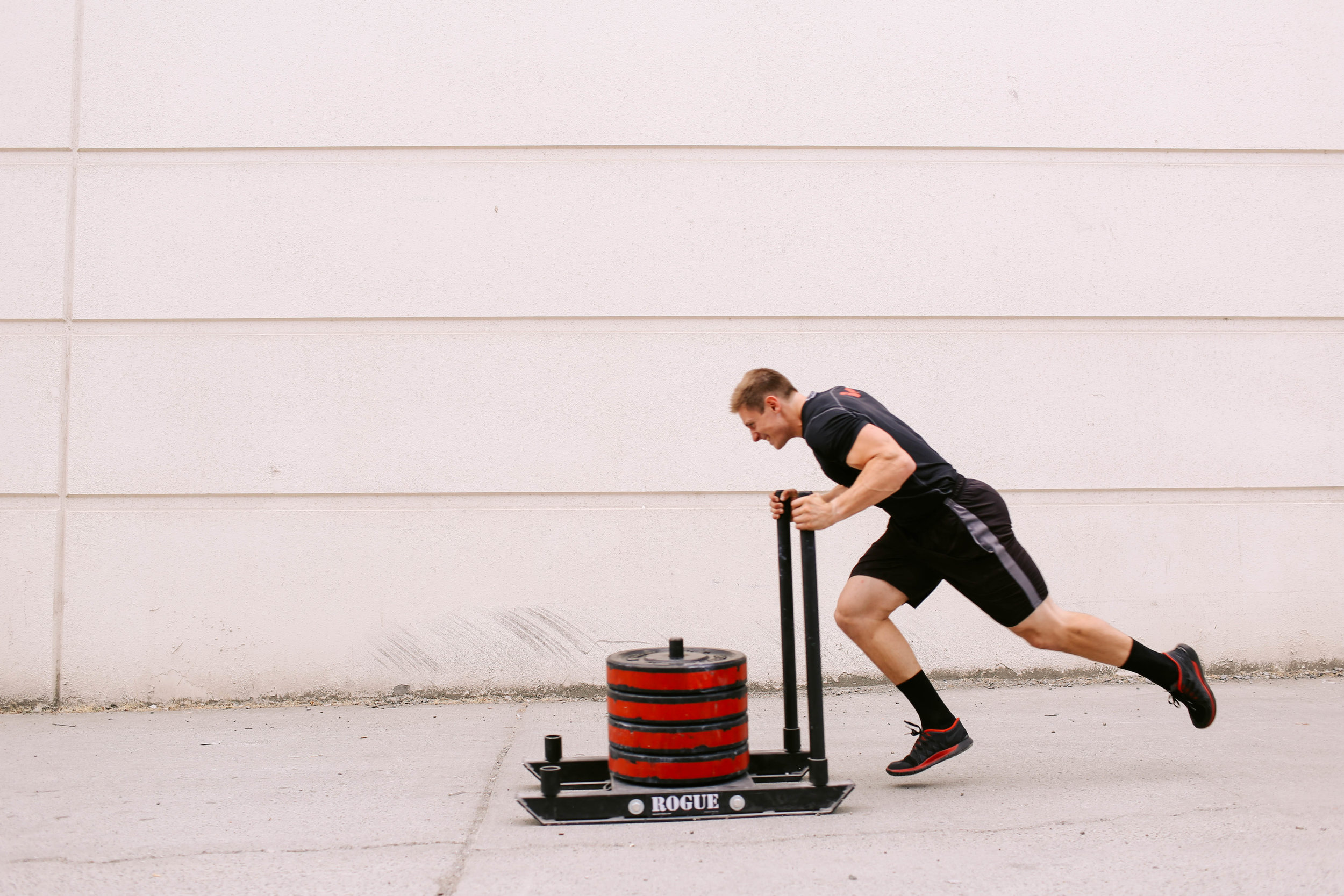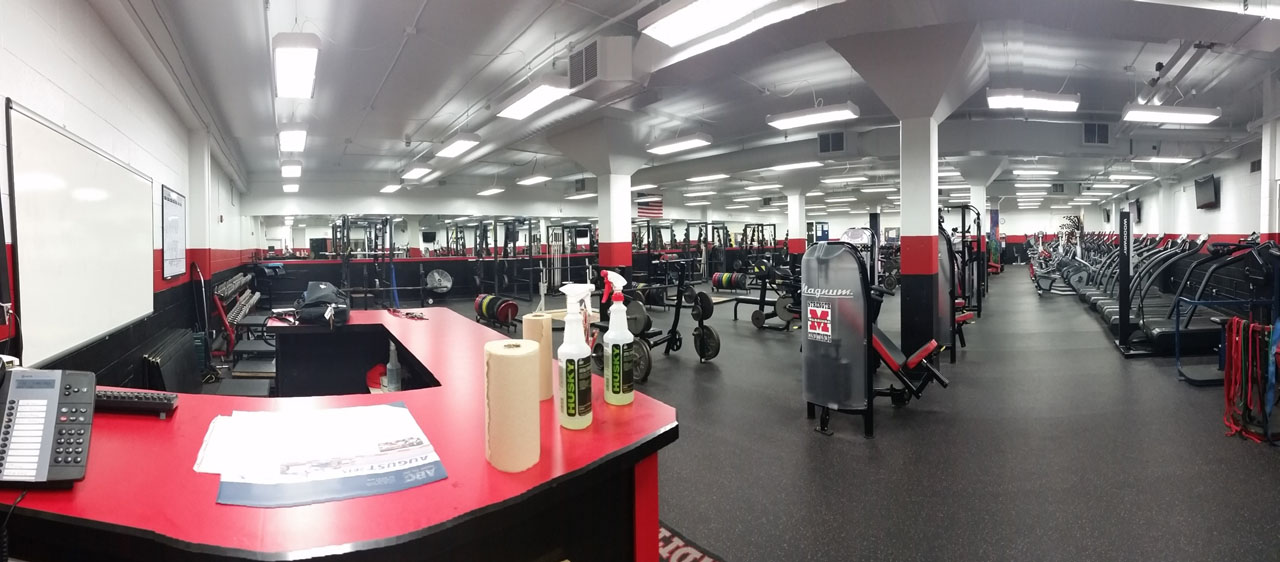How to Set Up Your Weight Room for Volt
/Volt was designed to help coaches navigate the challenges of a team training environment. We recognize that most coaches have to cycle dozens of athletes through a strength and conditioning program safely and efficiently, and so Volt training is optimized for a busy weight room. Since a successful program starts with your weight room, here is a quick guide to weight room set-up, management, safety, and more to help you get the most out of your Volt training.
Volt Equipment Checklist
Strength training requires equipment. The following pieces of equipment are frequently used in Volt movements, and while you can always work with the equipment you've got, we recommend this equipment for maximum effectiveness of your Volt training.
- BARBELLS: Barbells are arguably the most important tools for developing structural strength for athletes, as they allow for scalable strength progressions in a variety of movements. Most bars weigh 45lb, but we recommend also stocking 35-lb bars if you train both men's and women's teams at your facility.
- IRON WEIGHT PLATES: These versatile plates are used in non-explosive barbell lifts (like the squat, deadlift, and bench press) and can also be used without a barbell in movements like the plate good-morning. We recommend stocking plates that range from 1lb or 2.5lb to 45lb.
- BUMPER WEIGHT PLATES: These plates are coated in a resilient material (usually rubber) that allows them to bounce slightly when dropped. Bumper plates are especially useful for explosive/Olympic barbell lifts, as they can be safely dropped without damaging the lifting platform.
- DUMBBELLS: We recommend stocking dumbbells that range from 5lb to at least 65lb (depending on the strength and experience levels of your athletes)
- SQUAT RACKS: It's important to note that Smith Machines (with a fixed range of motion) and freestanding racks are not the same as a full squat rack. We recommend having at least 2 squat racks per weight room (depending on the number of athletes you train), to allow more athletes to train simultaneously. Make sure each squat rack has safety pins or bars that can be positioned to help athletes stay safe during movements like the squat and bench press.
- LIFTING PLATFORMS/DESIGNATED OLYMPIC AREA: These wooden platforms provide a bit of give, and do not break when bumper plates are dropped. Having a designated area for performing explosive/Olympic barbell lifts helps keep athletes safe should they need to drop weights, and prevents weights from being dropped onto the regular weight room floor.
- MEDICINE BALLS: Med balls are used in many dynamic warm-up and sport-specific power/speed movements. They can be made of soft or hard materials, or filled with sand (designed for slams). We recommend stocking several types and sizes of med ball, up to 20lb or 30lb.
- RESISTANCE BANDS: Bands are versatile tools used in a variety of Volt movements, from stretching and mobility work to injury mitigation training. We recommend purchasing several different types/weights of band, if possible.
- STABILITY BALLS: Sometimes called Swiss or yoga balls, these balls are great tools for core training and hip extension work (especially eccentric hamstring strengthening). Make a designated area, rack, or pen for stability balls, so they don't roll out onto the weight room floor and pose a safety hazard.
- PLYOMETRIC BOXES: Plyo boxes are used for box jumps, step-ups, depth jumps, and other weight-bearing movements, so be sure to purchase sturdy boxes. We recommend stocking several different sizes, up to 24" (but no higher than 36") for Volt movements.
- ADJUSTABLE WEIGHT BENCHES: Benches that can adjust to an incline position are great for both flat and incline versions of presses, rows, flyes, and more.
- PULL-UP BARS: Most squat racks will have a pull-up bar at the top, but it can be helpful to have more than one pull-up area for when the squat racks are in use.
- LAT PULLDOWN MACHINE: This cable machine allows athletes who cannot perform a pull-up to develop good downward pulling mechanics.
"Nice to Have" Equipment
The following pieces of equipment are nice to have, but not absolutely necessary for implementing Volt.
- GLUTE-HAM DEVELOPER (GHD): While you can certainly get by without this specialty piece of equipment, we highly recommend investing in a GHD at some point. The GHD allows for effective training of the posterior chain, particularly eccentric hamstring strengthening (as an injury mitigation mechanism).
- ADJUSTABLE CABLE TOWER: Volt training frequently uses cable-based movements, but these can sometimes be substituted with band, dumbbell, or even plate movements if necessary.
- KETTLEBELLS : Kettlebells are great tools for strength and conditioning work, but dummbells can almost always be substituted with similar effectiveness.
- WEIGHT SLEDS
- SANDBAGS
- TIRES
- AEROBIC EQUIPMENT
The weight room at Muskego High School, designed by Volt Advisory Board Member and 36-year veteran high school strength coach Mike Nitka.
Arranging Equipment
How your equipment is organized can have a big impact on safety and efficiency in your weight room. The following recommendations come straight from the NSCA's Essentials of Strength Training and Conditioning, 4th Edition.
- Group equipment into sections or areas by type: Olympic lifting area, stretching and floor work area, dumbbells and free weights area, etc.
- Shorter pieces of equipment should go in the center of the room and taller equipment can be bolted to the floor along the walls. This creates optimal traffic flow through the room while preserving a clear line of sight for the coach.
- Set up free weights and squat racks along the walls of the weight room. If you have an even number of squat racks, they can be placed back-to-back away from the walls.
- All racks should have at least 36" of space on all sides for walking safely around the rack and should be 3-4' away from any other nearby rack.
- Barbells and dumbbells should have at least 36" of space on either side to allow athletes to move between them safely.
Another shot of Muskego High School's weight room facilities.
Weight Room Management
The importance of safety in your weight room cannot be overstated. Here are some useful guidelines for the safe management of your training facility:
- Always keep the weight room as clean as possible. Make sure there are clear and easy paths through the weight room and to all exits.
- Any time a barbell is loaded, clamps (weight clips) should be used to secure the plates. Even during light sets.
- Platforms should be reserved for explosive lifts and deadlifts. The only plates that should be used on a platform are bumper plates.
- Plates and dumbbells should be returned to their original places after every set. Athletes should never leave plates, dumbbells, or barbells out in the middle of the floor.
Weight Room Accessories
From weight belts to footwear, there are plenty of accessories that must be managed in a weight room. Here are some guidelines for proper use of weight room accessories:
- SHOES: Athletes should wear shoes designed for athletics, preferably low-profile with a flat sole. Never allow cleats in the weight room.
- CHALK: Chalk should be used if available, but only on barbell movements or other exercises that are taxing to the grip.
- WEIGHT BELTS: Belts should be reserved for heavy attempts of maximal lifts. Athletes can develop a dependency on weight belts that limits active core engagement.
- WEIGHT STRAPS: Strap use should be limited to heavy attempts of movements where grip strength is the limiting factor (like a deadlift or high pull). Overusing straps can inhibit grip strength development.
- GLOVES: Gloves should never be worn while lifting. Gloves limit grip and hand strength development and can prevent athletes from gaining an important feel for the proper use of equipment.
- HEADPHONES/EARBUDS: Athletes should not wear headphones when training with the team. Headphones inhibit communication between coach and athlete and can be a distraction while training.
Organizing Training Groups
Since Volt is optimized for a team setting, we recommend organizing your athletes into training groups to create an efficient flow around your weight room. We recommend grouping athletes based on height and/or Strength Numbers (how much they can lift in the hang clean, back squat, and bench press).
Grouping athletes of a similar height can help eliminate time-consuming equipment adjustments on movements involving a rack or bench press. If your athletes have tested their Strength Numbers, grouping athletes whose numbers are within 10-20 lb of each other's can likewise make workouts flow more smoothly. (If your athletes haven’t tested their Strength Numbers yet, don’t worry! Your Volt program will prompt them to test when they are ready.) You can also group athletes based on position group, training age, or any other configuration that fits your unique training environment.
If possible, keep athletes training together through the first three movements, or at least the first two movement groupings, to ensure the most efficient workflow for the training session. From there, the following movement groupings can be done out of turn as needed, to accommodate a busy weight room.
If you have questions about weight room setup, safety, or management, please contact your designated CSCS-certified Strength Coach Consultant!
If you're not part of the Volt Family, you can join over 250,000 coaches and athletes using Volt's intelligent training system. For more information, click here.






